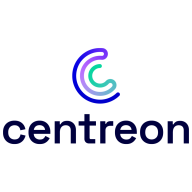

Centreon and Amazon CloudWatch compete in the monitoring software category. Amazon CloudWatch has an upper hand due to its seamless AWS integration and real-time analytics capabilities.
Features: Centreon is noted for customizable dashboards, extensive plugin support, and flexible monitoring. It covers server and network monitoring, alerting, and reporting. Amazon CloudWatch excels with real-time infrastructure monitoring, integration with AWS services, and sophisticated analytics, ensuring efficient AWS management.
Room for Improvement: Centreon could improve its end-to-end monitoring, reporting, and cloud capabilities. It requires a more responsive UI and load balancing features. Amazon CloudWatch needs better visualization, enhanced dashboards, and improved third-party integrations. Broader integration beyond AWS could enhance its utility.
Ease of Deployment and Customer Service: Centreon suits on-premises and hybrid clouds with personalized service, though limited to business hours. Users seek more flexible support. Amazon CloudWatch benefits from AWS's robust cloud infrastructure and support but could offer more intuitive guidance for users.
Pricing and ROI: Centreon's open-source model promises economical pricing and valuable ROI through reduced costs and simplified monitoring. It incurs additional charges for premium modules. Amazon CloudWatch's pay-as-you-go model aligns with AWS integration but may escalate with data use. Users value its reasonable pricing within the AWS ecosystem.
Amazon CloudWatch offers cost-saving advantages by being an inbuilt solution that requires no separate setup or maintenance for monitoring tasks.
Centreon provides timesaving and costsaving benefits as it lets us manage multiple devices on a single platform.
It significantly saves time by automating monitoring tasks and reduces costs as it requires fewer resources.
In recent years, due to business expansion, knowledge levels among support engineers seem to vary.
While using their cloud and cloud resources, if you have an issue with CloudWatch, you must pay additional monthly fees to get time from dedicated tech support.
We do not have direct access to Centreon's technical support.
If issues arise, like services appearing as down in Centreon, technical support helps check the polar-server communication.
Technical support from Centreon responds within 24 hours and resolves issues quickly.
It is already there as a managed service from AWS.
Amazon CloudWatch's scalability is managed by AWS.
Occasionally, for several hours, we do not receive any alerts, causing a business impact.
We use other tools for adding and deploying configured devices, but direct access from Centreon would be beneficial.
I sometimes notice slowness when Amazon CloudWatch agents are installed on machines with less capacity, causing me to use other monitoring tools.
Sometimes we do not receive alerts, causing business impact, and users ask why no alerts were received.
Centreon is a much more straightforward and stable tool compared to Icinga.
When using third-party dashboards such as Kibana or Grafana and other visualization tools, there should be a way to feed CloudWatch's data and logging capabilities into these visualization tools.
We are in a process of integrating Grafana, Loki, and Prometheus to have better visualization on Amazon CloudWatch.
Maybe Amazon Web Services can improve by providing a library for CloudWatch with some useful features.
Enhancements are needed in identifying configuration issues, providing real-time alerts in case of issues, and improving the HTTP configuration tasks.
Reliability is sometimes an issue. Centreon has a developer mode and production mode, but sometimes alerts don't come through in production mode.
While Centreon excels at server-level monitoring, it lacks the ability to track web app availability and latency, unlike Dynatrace, which is efficient in this area.
Overall, the pricing of Amazon CloudWatch is very expensive.
Amazon CloudWatch charges more for custom metrics as well as for changes in the timeline.
Centreon's pricing is not very expensive.
Amazon CloudWatch allows me to set up and view even historical logs, which is one of the features I find valuable.
If there is a CPU spike or system issues, we set alarms to notify us if the system is going down or not reachable.
I like its filtering capability and its ability to give the cyber engine insights.
Monitoring is a fundamental pillar of technical support, and Centreon streamlines this process, reducing the need for extensive manual checks.
Centreon's real-time monitoring, despite having some manual aspects, supports us in managing our operations effectively.
Centreon allows us to monitor all of our devices on one platform.
| Product | Market Share (%) |
|---|---|
| Amazon CloudWatch | 2.3% |
| Centreon | 3.1% |
| Other | 94.6% |


| Company Size | Count |
|---|---|
| Small Business | 17 |
| Midsize Enterprise | 9 |
| Large Enterprise | 24 |
| Company Size | Count |
|---|---|
| Small Business | 11 |
| Midsize Enterprise | 5 |
| Large Enterprise | 14 |
Amazon CloudWatch integrates seamlessly with AWS, providing real-time monitoring and alerting features. Its interface supports task automation, enhancing troubleshooting and analytics capabilities, while offering strong security and scalability at a cost-effective rate.
Amazon CloudWatch is an impactful platform for monitoring AWS resources and managing application performance. It simplifies infrastructure performance monitoring by providing comprehensive analytics capabilities, including application insights and event scheduling. Users appreciate CloudWatch for its detailed metrics, dashboards, and support in issuing alerts to detect anomalies. It efficiently tracks performance, optimizes resource utilization, and ensures service availability. CloudWatch is recognized for its robust alerting features and integration with other AWS services, further supporting its resource monitoring capabilities. However, there is room for improvement in dashboard customization, log streaming speed, and integration with non-AWS services. Enhancements in API integration, machine learning features, and support for third-party tools are also desired.
What features does Amazon CloudWatch offer?Industries implementing Amazon CloudWatch often focus on optimizing IT infrastructure. Companies in sectors like finance and e-commerce rely on its monitoring and alerting capabilities to ensure service uptime and performance. The platform's automation and analytics features empower teams to proactively manage performance and detect potential issues promptly.
Centreon is an all-in-one IT monitoring solution that is a network, system, applicative supervision, and monitoring tool. It is free and open source, and one of the most flexible and powerful monitoring softwares on the market.
Centreon Features
Centreon has many valuable key features. Some of the most useful ones include:
Centreon Benefits
There are several benefits to implementing Centreon. Some of the biggest advantages the solution offers include:
Reviews from Real Users
Below are some reviews and helpful feedback written by Centreon users.
PeerSpot user Thor M., CEO at a tech services company, says, "The single-pane view provides us a view of all of our network infrastructure, and it is one of the most important tools that we use to see the status of our customers' networks. It provides a nice benefit when it comes to helping align IT operations with business objectives. The top-down views, dashboards, and business context reporting are things that are nice to have because you want to be able to show the customer that everything is working, that problems have been addressed, and that you're providing value.”
Thomas C., Managing Director, Canada at Eva, comments, “The most valuable feature of the solution is the flexibility, the ability to integrate all kinds of equipment. As long as something has an IP you can monitor it. What we try to achieve all the time is not only saying a company's system is available, but to give additional data on the performance of the equipment. So the flexibility is what matters the most to us, where we can script everything. Centreon has a lot of Plugin Packs, meaning they support, by design, a lot of devices. And on top of that, we have the ability to add our own scripts and do whatever we want and display the data as we want in the central dashboards.”
Marcilio L., President at ITS Solucoes, expresses, "The dashboards are valuable because they ease troubleshooting and viewing. It becomes easier to locate the source of a problem... The dashboards make it easier to communicate with our clients. They don't want to see the alert console, they want to see a beautiful dashboard representing their network and their business and to watch it in case something is wrong in their environment."
Florent Q., Network Engineer at a computer software company, mentions, "The most valuable feature is that we can manually configure everything we need. After it comes inside the interface of Centreon, you can display it. Because the interface is quite user-friendly, you can manually configure the configuration very deeply, which is very pleasant and useful because you can monitor and see everything on your service list, dashboard, or MAP. The most useful feature for me is that you can create your own plugin and monitoring query."
We monitor all Cloud Monitoring Software reviews to prevent fraudulent reviews and keep review quality high. We do not post reviews by company employees or direct competitors. We validate each review for authenticity via cross-reference with LinkedIn, and personal follow-up with the reviewer when necessary.